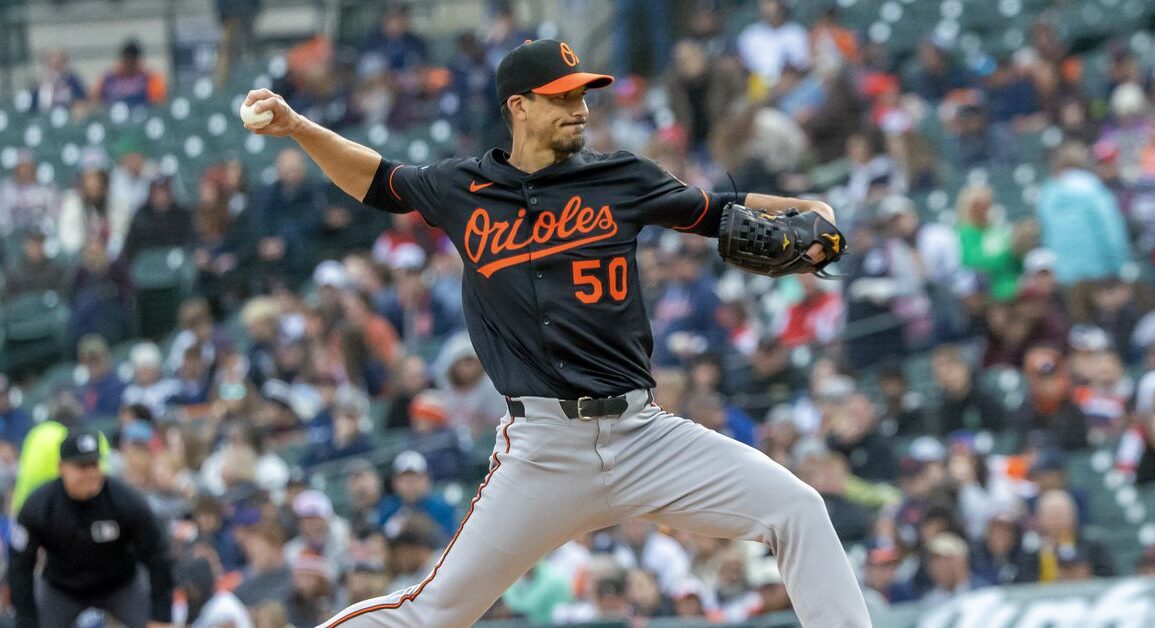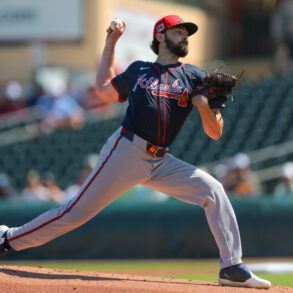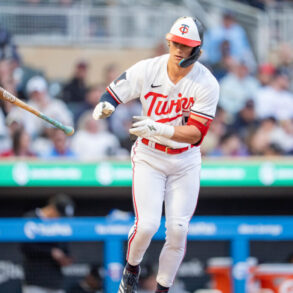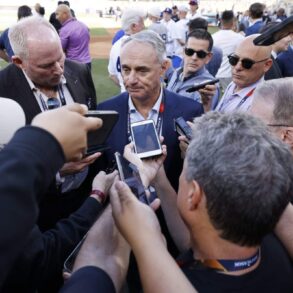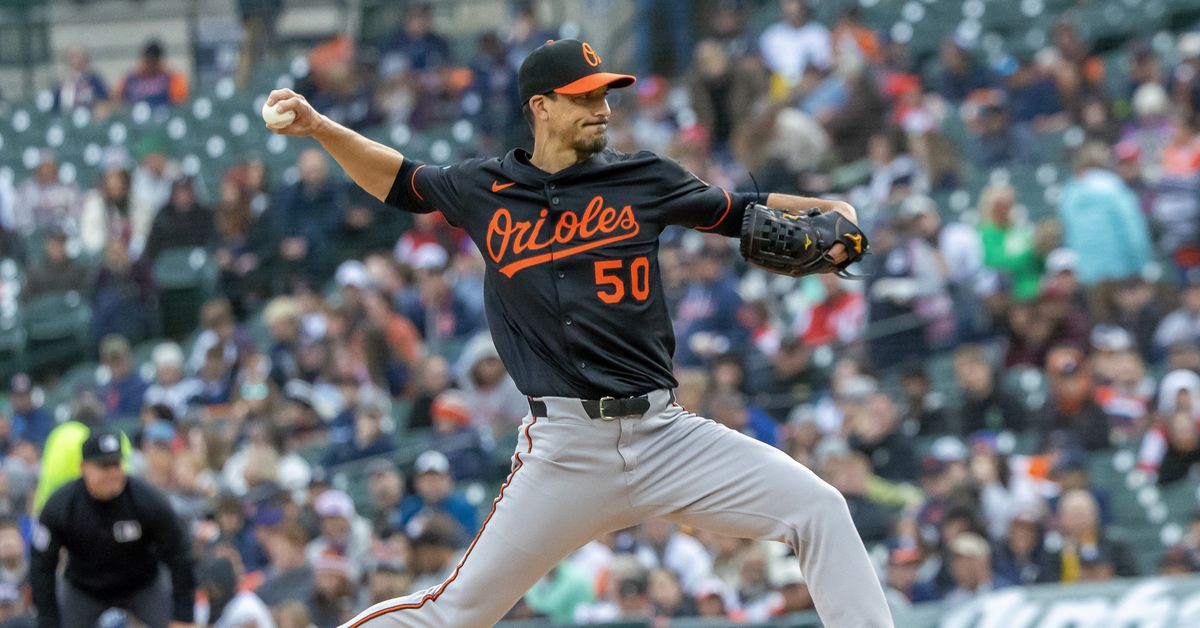
As the cruise of disappointment that is the 2025 Orioles sails toward the second month of the season, starting pitching continues to be an anchor around this team’s neck. The O’s starters are in competition with the Marlins and Rockies for the “honor” of MLB’s worst rotation, with Baltimore currently ranking last in starter FIP and fWAR.
There are at least some reinforcements on the way; Kyle Gibson will make his 2025 debut tonight against the Yankees. Zach Eflin threw a bullpen on Friday and could be on his way to a return in late May or early June.
However, with Grayson Rodriguez’s timetable still uncertain and Kyle Bradish likely only back by the All-Star break (or later), the current members of the rotation will need to step up if the O’s are going to stop this ship from sinking. Given the results after 5+ trips through the rotation, it begs the question of whether the Orioles’ pitching lab needs to get these guys to change their approach.
Last week, ESPN’s Jeff Passan published an article detailing baseball’s top pitchers and their never-ending journey to fine-tune their arsenal of pitches. Passan highlights how the best pitchers in today’s game all feature arsenals that are five to six pitches deep (or, in rare cases like Kansas City’s Seth Lugo, even deeper).
Passan highlighted 22 different hurlers in his article, including reigning Cy Young winners Tarik Skubal and Chris Sale, presumptive future Cy Young winner Paul Skenes and other standouts like Spencer Schwellenbach and Yoshinobu Yamamoto. When breaking down the arsenals of these top pitchers, it becomes clear that they not only have a diverse selection of pitches to work with but also a plan on how to use that arsenal.
Across those 22 pitchers, their average usage rate of their primary pitch is 40.8% of the time. For 15 pitchers in this group, the primary offering is a four-seam fastball. Some, like Sonny Gray and Framber Valdez, prefer sinkers as their go-to pitch. We’re all familiar with Corbin Burnes and his trusty cutter. Skubal throws his changeup more than any other pitch, while Sale favors his slider.
For those pitchers, their second-most-utilized pitches are thrown 25.3% of the time on average. For their tertiary offerings, that number drops to 15.9%, and their fourth and fifth pitches come in at 10.4% and 5.7% usage rates.
These trends track the general approach to pitching that became popular along with the rise of analytics. Instead of constantly trying to vary your pitches and set hitters up with sequencing and pitching IQ, analytics suggest you should rely heavily on your top pitches and use the rest of your arsenal just enough to keep hitters guessing somewhat.
This approach to pitching has resonated throughout the Orioles’ pitching lab since Mike Elias and Co. took over in 2019. When Kyle Bradish debuted in 2022, he was relying on a four-seam fastball that was producing objectively terrible results. After a demotion, Bradish retooled his arsenal to highlight his slider and two-seamer, and upon his return to Baltimore, posted a 3.28 ERA and .212 BAA in the second half of his rookie season. The O’s similarly helped Zach Eflin retool his repertoire, which saw him severely limit his sinker usage upon arrival in Baltimore in favor of his cutter and curveball.
The problem with the current crop of Orioles starters is that they either don’t have a pitch good enough to reliably call a number one offering, or they are underutilizing their best pitch(es) in favor of more mediocre ones. Compared to the select group of pitchers highlighted by Passan, the O’s current staff uses their primary pitch 31.1% of the time and their second pitch 22.9% of the time—drop-offs of 9.8% and 2.4% respectively.
This also means that O’s starters are relying more on the third through fifth offerings. Baltimore’s starters throw their third pitches 17.3% (+1.4%), the fourth pitches 16% (+4.6%) and their fifth pitches 12.7% (+7%).
This paints a picture of pitchers that are perhaps tinkering too much with their approach. It also suggest that some of the O’s are struggling to get hitters out with what should be their best pitches, forcing them to throw their other offerings more.
The poster child for the latter problem is Charlie Morton. The 41-year-old came into this season off back-to-back years of 40+% curveball usage, with his breaking ball far and away the best pitch in his arsenal the last four seasons. This year, opponents are hitting .370 with a .741 slugging percentage on Morton’s big breaker, making it one of the worst pitches in baseball.
Morton has made a living the last four years as someone who pitches backwards, getting ahead on his breaking ball before unleashing his fastball. Given his current struggles and the fact that opponents are hitting only .154 on his fastball, Morton should look to go back to a traditional approach to try and salvage the horrid start to his Orioles career.
Dean Kremer has the former problem in that he doesn’t seem to have a consistent plan from start to start. Last season, Kremer’s newly added splitter was his best pitch. This year, opponents are hitting .400 on the 29-year-old’s splitter, resulting in his shying away from the pitch. Given the early-season numbers, it’s Kremer who should pitch like a vintage Morton, as his curveball has become his best pitch in terms of opponent BAA while also generating a 43% chase rate.
Cade Povich, who continues to get dominated by RHHs, should look to take a page from Skubal’s book when it comes to changeup usage. Povich’s new kick change has been his best weapon against righties, holding them to a .231 average and .385 slugging percentage. Skubal throws his changeup 35.2% of the time to right-handers, compared to 18.5% for Povich. If Slim can start pumping in offspeed pitches against righties, he may prove to be effective enough to stay in this rotation long-term.
This is not to say that the pitchers messing with their approach would all of a sudden take this Orioles rotation from the bottom of the league to above average. However, the Orioles have limited options in terms of replacements until the likes of Rodriguez, Bradish, Eflin and others get healthy. These current Baltimore starters have pitches that get batters out, but currently, they don’t throw them enough. This is not typically a coaching staff/organization that likes to deviate from their original plans, but in the case of their starting pitchers, a new approach is badly needed.
This post was originally published on this site be sure to check out more of their content.




